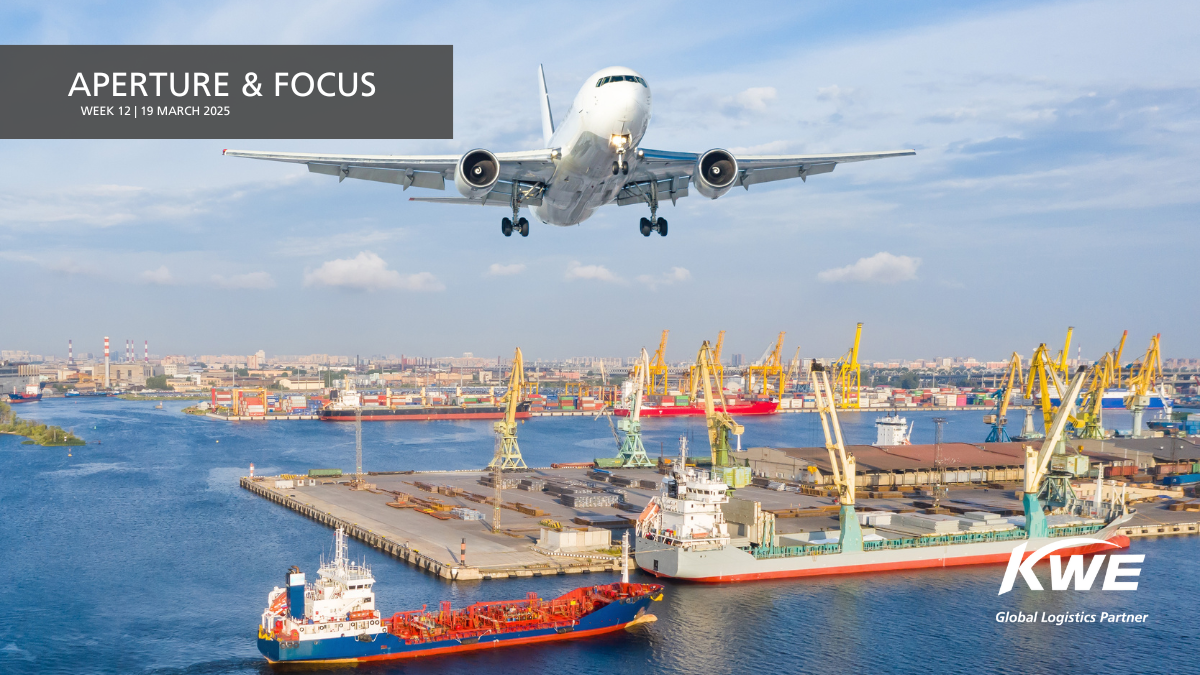Quote
Aperture & Focus 2025: Week 12

Global Aperture
Evolving e-commerce trends, shifting capacity, and growing competition from Middle Eastern and North American carriers are reshaping air cargo dynamics in 2025. Major airlines are adjusting their strategies by balancing freighter operations with increased belly cargo capacity while responding to geopolitical uncertainties and supply chain diversification.
In February, airfreight volumes on the China-US lane declined, reflecting a slowdown in e-commerce demand. US retailers have lowered second-quarter import projections, citing concerns over increased tariffs and potential new fees on Chinese goods, which could further impact air cargo volumes.
Hope for resuming Suez Canal transits was dampened over the weekend, as tensions between the US and Yemen’s Houthi rebels raised concerns about the safety of vessels in the region. Experts warn that ongoing instability, particularly around Hodeidah port, will continue to pose risks to vessels in the Red Sea and Gulf of Aden, complicating efforts to restore normal transit operations
Regional Focus
Americas
United States: On March 12th, a 25% tariff on steel and aluminum imports was imposed to boost domestic production, triggering immediate retaliation from Canada and the EU. In response, the EU announced $28 billion in countermeasures set for full implementation by April 13th, while Canada targeted key U.S. exports. The Organization for Economic Cooperation and Development warns these tariffs could slow North American economic growth, with U.S. GDP projections lowered to 2.2% for 2025.
Canada: Severe weather and rail disruptions are causing major delays at Canadian ports. Vancouver is also congested due to rail restrictions and ongoing liner schedule delays. This has led major shipping lines to adjust routes to reduce delays and mitigate port disruptions.
Mexico: Seven regional container lines are launching the Asia-Mexico Express (AMX) service on April 30th, connecting key ports in China, South Korea, and Mexico to tap into the growing Mexican market. The service will offer expedited transit times, with 23-25 days from China and 21 days from Busan to Mexico’s Manzanillo port, following the shift in manufacturing from China to Mexico.
Asia-Pacific
India: Facing challenges in southern India's ocean trade, Maersk and Hapag-Lloyd, partners in the Gemini Cooperation, have reduced port calls in the region. They have decreased shared loading space on a direct Europe-bound service from Ennore port (Chennai), which began in early February.
China: Continuing the country’s efforts to optimize its aviation sector, Chinese authorities have introduced 16 measures to accelerate customs clearance for high-tech equipment and medical products. These initiatives are designed to boost international air transport, streamline trade, and facilitate cross-border exchanges.
Hong Kong : Hong Kong is becoming a key destination for European freighter operators, who are increasing capacity to meet rising ecommerce demand. Operators are adjusting their networks by reducing service to Latin America and Africa while continuing to support perishables markets, with expanded networks and new transpacific services.
Europe, Middle East & Africa
United Kingdom: Newcastle International Airport has announced plans for a new cargo hub, AirLink, to enhance the region's logistics infrastructure. The 750,000 sq ft facility aims to expedite the handling of time-sensitive shipments such as pharmaceuticals and automotive parts.
South Africa: The Port of Cape Town is facing significant congestion, worsened by adverse weather, with delays of eight to ten days and strong winds affecting operations. The South Africa Association of Freight Forwarders highlights weather, dredging, equipment breakdowns, and shortages as key factors contributing to the delays.